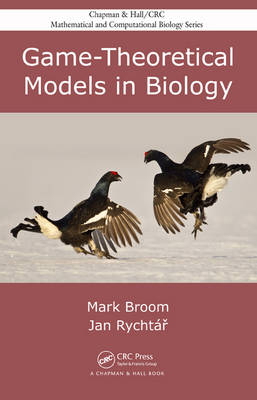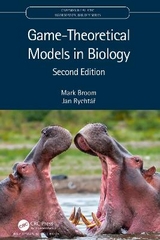
Game-Theoretical Models in Biology
Taylor & Francis Inc (Verlag)
978-1-4398-5321-4 (ISBN)
- Titel ist leider vergriffen;
keine Neuauflage - Artikel merken
The book describes a wide range of topics in evolutionary games, including matrix games, replicator dynamics, the hawk-dove game, and the prisoner’s dilemma. It covers the evolutionarily stable strategy, a key concept in biological games, and offers in-depth details of the mathematical models. Most chapters illustrate how to use MATLAB® to solve various games.
Important biological phenomena, such as the sex ratio of so many species being close to a half, the evolution of cooperative behavior, and the existence of adornments (for example, the peacock’s tail), have been explained using ideas underpinned by game theoretical modeling. Suitable for readers studying and working at the interface of mathematics and the life sciences, this book shows how evolutionary game theory is used in the modeling of these diverse biological phenomena.
Mark Broom is a professor of mathematics at City University London. For 20 years, he has carried out mathematical research in game theory applied to biology. His major research themes include multi-player games, patterns of evolutionarily stable strategies, models of parasitic behavior (especially kleptoparasitism), the evolution of defense and signaling, and evolutionary processes on graphs. He received his PhD in mathematics from the University of Sheffield. Jan Rychtář is an associate professor of mathematics at the University of North Carolina at Greensboro, where he helped start a math-biology research group involving faculty and students from the biology and mathematics departments. He works on game theoretical models and mathematical models of kleptoparasitism. His recent research themes focus on models of brood parasitism in dung beetles, models of mate selection in honey bees, and evolutionary processes on graphs. He received his PhD in mathematics from the University of Alberta.
Introduction. What Is a Game? Two Approaches to Game Analysis. Some Classical Games. The Underlying Biology. Matrix Games. Nonlinear Games. Asymmetric Games. Multi-Player Games. Extensive Form Games and Other Concepts in Game Theory. State-Based Games. Games in Finite and Structured Populations. Adaptive Dynamics. The Evolution of Cooperation. Group Living. Mating Games. Food Competition. Predator-Prey and Host-Parasite Interactions. Epidemic Models. Conclusions. Appendix. Bibliography. Index.
| Erscheint lt. Verlag | 24.4.2013 |
|---|---|
| Reihe/Serie | Chapman & Hall/CRC Mathematical Biology Series |
| Verlagsort | Washington |
| Sprache | englisch |
| Maße | 156 x 234 mm |
| Gewicht | 1120 g |
| Themenwelt | Mathematik / Informatik ► Mathematik ► Angewandte Mathematik |
| Mathematik / Informatik ► Mathematik ► Finanz- / Wirtschaftsmathematik | |
| Mathematik / Informatik ► Mathematik ► Graphentheorie | |
| Naturwissenschaften ► Biologie ► Evolution | |
| ISBN-10 | 1-4398-5321-5 / 1439853215 |
| ISBN-13 | 978-1-4398-5321-4 / 9781439853214 |
| Zustand | Neuware |
| Informationen gemäß Produktsicherheitsverordnung (GPSR) | |
| Haben Sie eine Frage zum Produkt? |
aus dem Bereich



